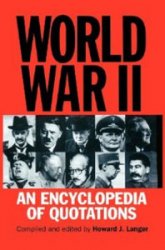The largest order of friars in early modern Europe, the Franciscans were active in missionary work but in the Americas were torn by internal divisions.
The Franciscan order was founded in the early 13th century by Francis of Assisi. By the 16th century the Franciscans, like other religious orders, were being criticized for not living up to their vows of poverty, chastity, and obedience but instead living in luxury. These criticisms came both from within and without the order. From outside some secular leaders, most notably Ferdinand and Isabella of Spain, tried to reform the order. More important reform impulses within the order led to its division. By the 14th century some Franciscans had come to believe that the order needed to adhere more closely to the vision of St. Francis, especially in the matter of poverty. These reformers came to be known as Observants. By 1517 the division between the Observants and the Conventuals had become so acrimonious that Pope Leo X issued a bull, Ite et vos, that separated them into distinct branches within the Franciscan order. This division left the Observants with about 30,000 members and the Conventuals with about 25,000. The same impulse to recover the purity of the original order would result in more divisions in the 16th century, leading to the creation of four new offshoots, the Discalced, Recollect, Reformed, and Capuchin Franciscans. Among the female orders of Franciscans, reform usually meant a greater emphasis on the strict cloistered life.
Roman Catholic friars, generally Franciscans, accompanied initial Spanish explorations of the New World. Franciscan missionaries landed with Hernan Cortes in 1525 in what is now La Paz, Mexico, ostensibly to introduce Christianity to Native American groups. The Franciscans abandoned this missionary effort due to difficult agricultural conditions. Beginning in 1540, Franciscan friars accompanied the expedition of Francisco Coronado, only to be murdered by Native Americans they attempted to convert. The Franciscans made another effort to establish missions among Native Americans in 1596, when five friars accompanied Spaniard Sebastian Vizcaino. Ill-supplied and unsuccessful in recruiting neophytes, these missionaries again abandoned missionary efforts in Baja California. In general, the Franciscan friars were less willing than the Jesuits to think that converts could retain their cultural heritage while becoming Christian and were more likely to expect cultural as well as religious conversion.
Further reading: Jean Delumeau, Catholicism between Luther and Voltaire: A New View of the Counter-Reformation (London, Burns and Oates, 1977); John Patrick Donnelly, S. J., “Religious Orders,” in The Oxford Encyclopedia of the Reformation, vol. 3, ed. Hans J. Hillerbrand (New York: Oxford University Press, 1996), 413-416; C. J. Lynch, “Franciscans,” in the New Catholic Encyclopedia, vol. 4, ed. William J. McDonald, et al. (New York: McGraw-Hill, 1967), 38-46; Lyle N. McAlister, Spain and Portugal in the New World, 1492-1700 (Minneapolis: University of Minnesota Press, 1984); John Moorman, A History of the Franciscan Order: From Its Origins to the Year 1517 (Oxford, U. K.: Clarendon Press, 1968).
—Martha K. Robinson — James Jenks




 World History
World History





![Black Thursday [Illustrated Edition]](/uploads/posts/2015-05/1432470149_1431513568_003514b1_medium.jpeg)



